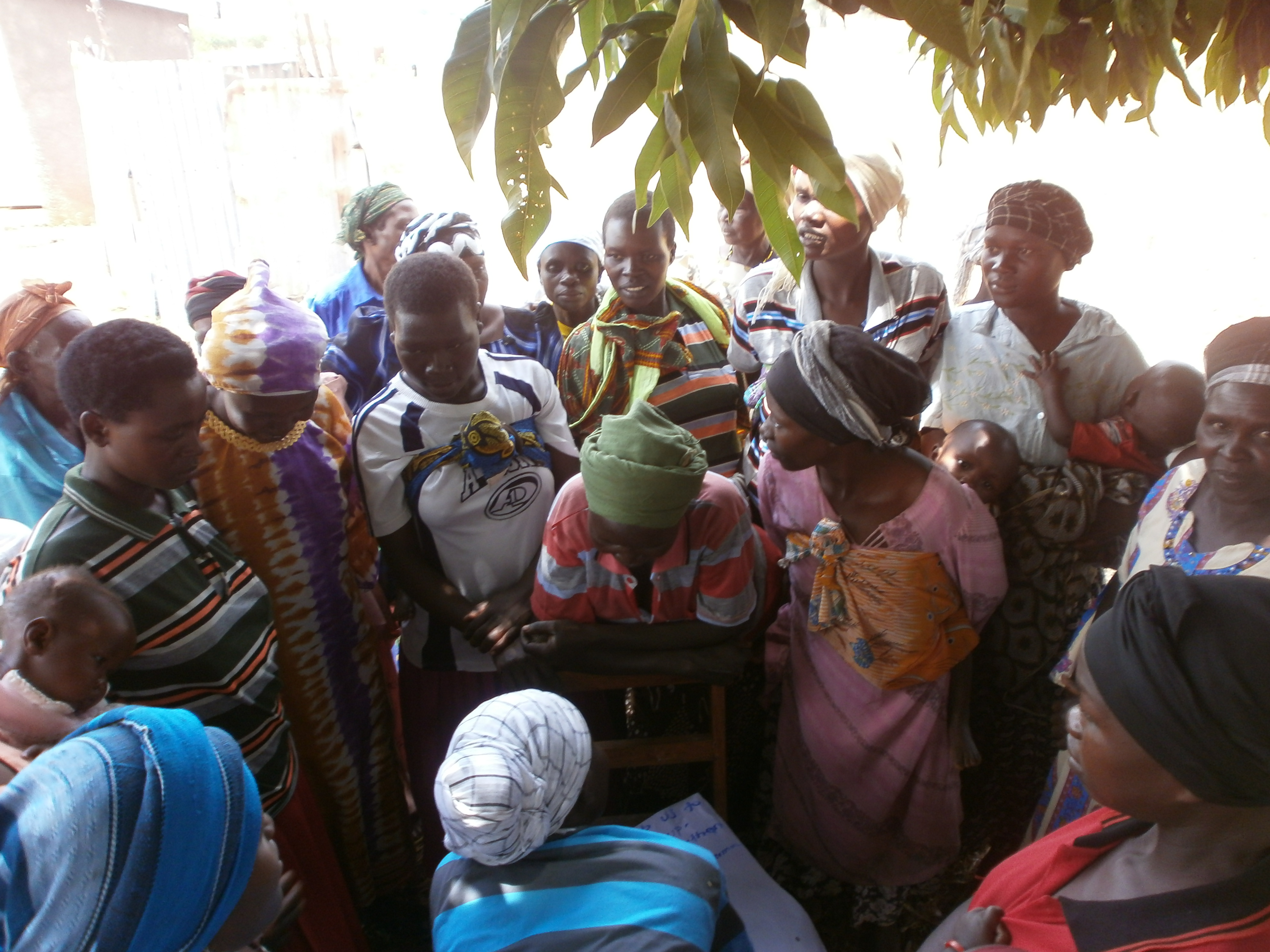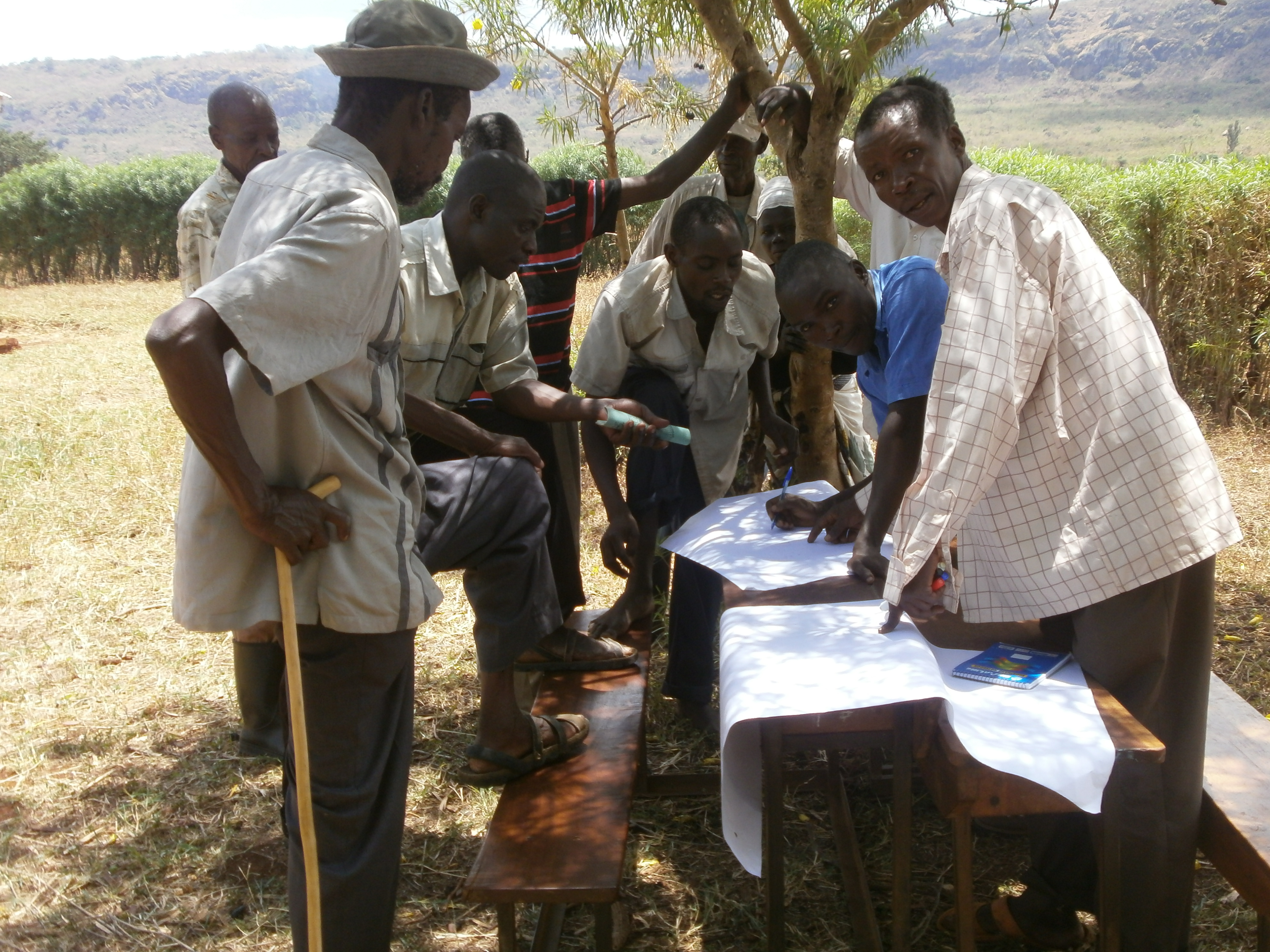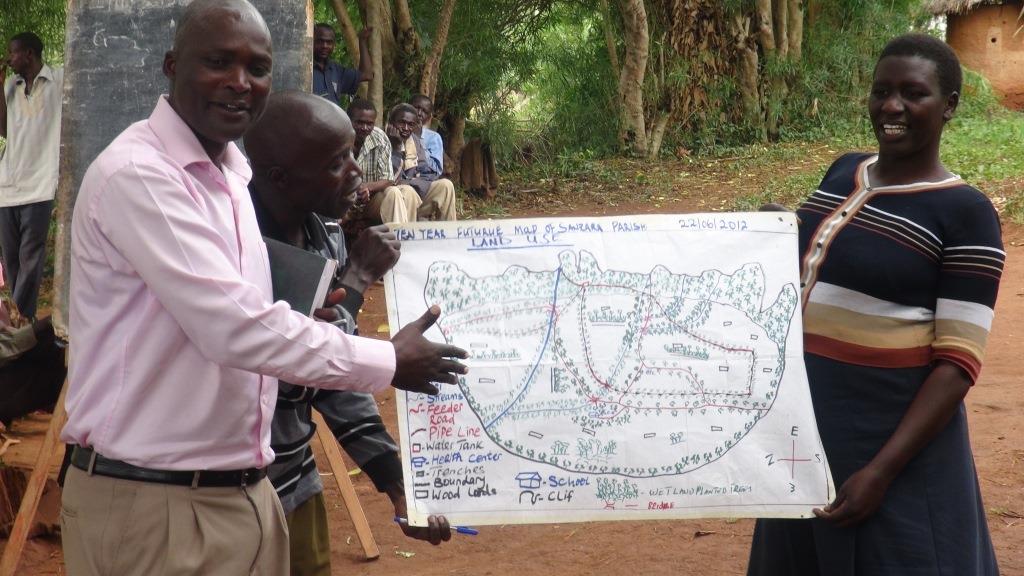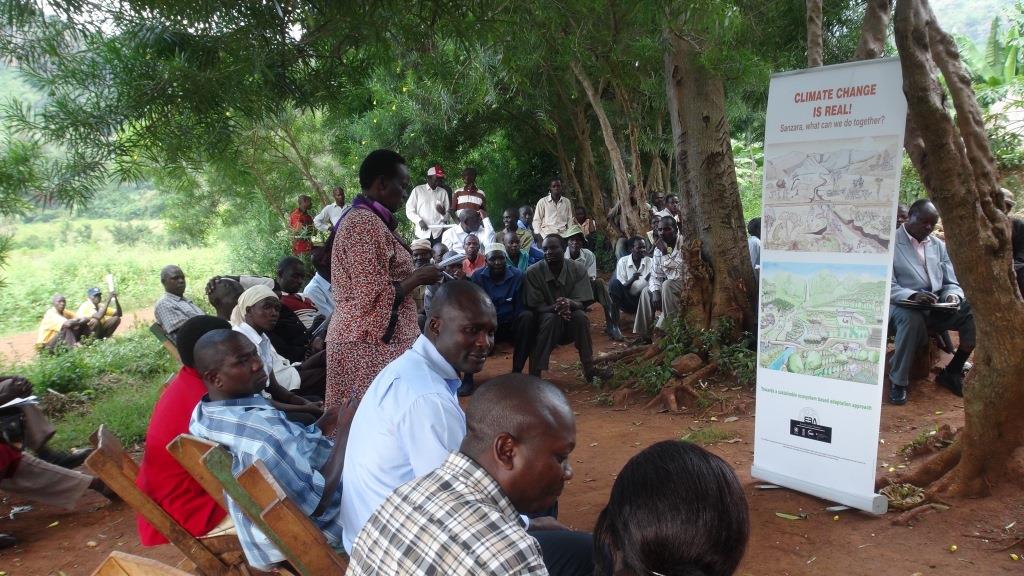





The purpose of this building block is to work with the affected community to identify the major problems and underlying causes using participatory tools. In Sanzara, the process started with a vulnerability impact assessment that combined both scientific and participatory tools to identify potential climate impacts, rate of ecosystem services depletion, risks, and current adaptation measures. A community map of the most degraded areas in the catchment was developed; based on this, a problem/solution matrix was prepared that provided details about the main climate challenges and impacts, how these affected different categories of people, and a suite of possible restoration and adaptation interventions. This process culminated in a 10-year vision map and a strategy for achieving this vision. Deliberate effort was put into ensuring that mobilization, timing, and organization of meetings encouraged all categories of community members (women, youth, elderly etc.) to actively participate. The process put the community members at the center, thereby promoting ownership of the ensuing vision and strategy. This ownership contributed to a collaborative effort to sustain these interventions with clear action plans and a community-driven monitoring framework.
- Ensure that the process is as participatory and as interactive as possible.
- Ensure that key community groups such as women, elders, youth, and other vulnerable groups are fairly represented throughout the process.
- Bring on board relevant actors such as local governments, political, cultural, and religious leaders, and civil society organizations.
- Support the strengthening of local governance structures to promote ownership and sustainability of the interventions.
- Align implementation of the measures with the government planning cycle.
- Building the trust of communities requires long-term engagement and the inclusion of all relevant actors. This is especially important in communities where there is controversy over questions like land tenure.
- Any community will be comprised of individuals with different levels of understanding of and appreciation for the issue at hand. Recognizing these different levels and devising means to ensure that everyone remains on board is key to avoiding cases of maladaptation.
- Participatory planning is crucial for ensuring that all partners, beneficiaries, and stakeholders are engaged in the process right from the start. This builds cohesion and helps ensure ownership and sustainability.
- Managing expectations is critical to ensuring that community members participate for the right reasons. This is key for sustaining behavior change toward the implementation of EbA interventions.